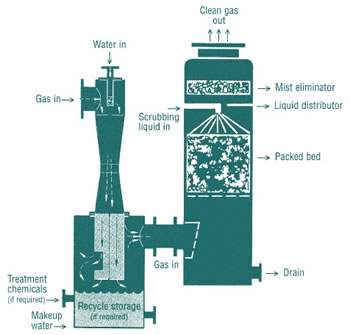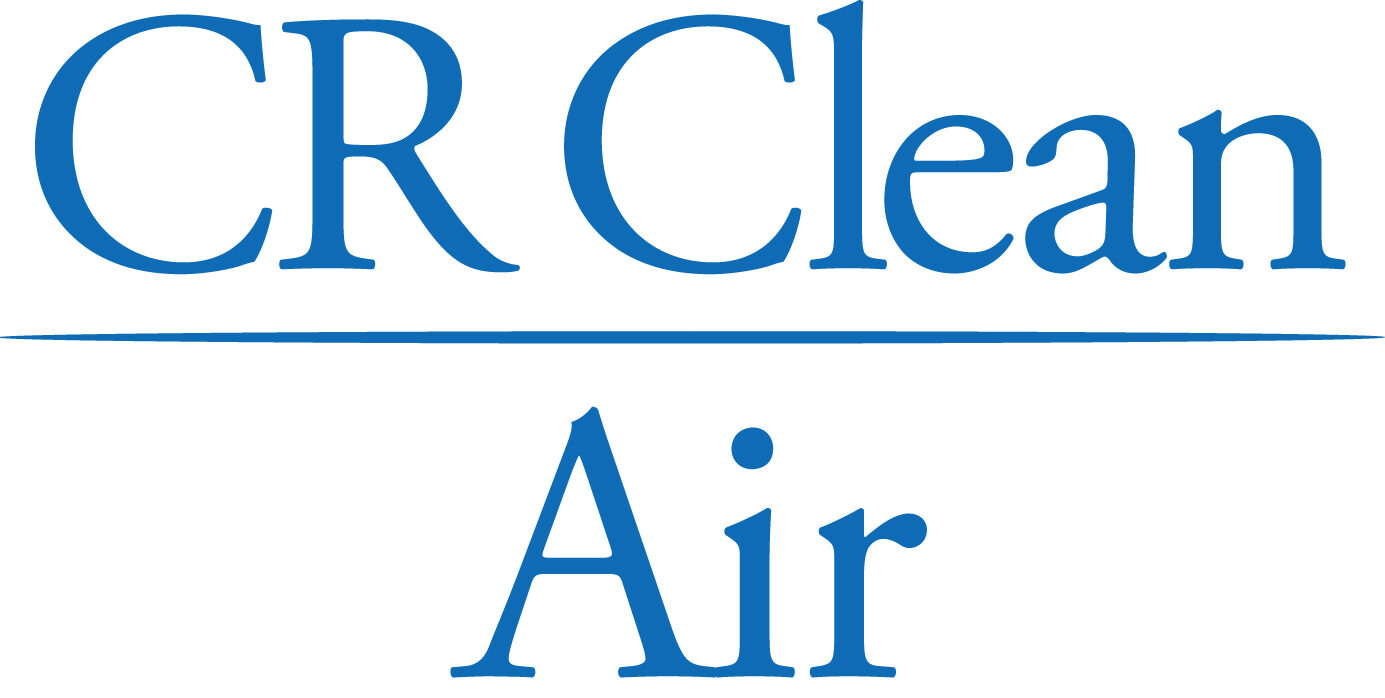T his two-stage scrubbing system utilizes a jet venturi scrubber in conjunction with a counter current packed tower including entrainment mist eliminator. It was designed to eliminate the HCl (hydrochloric acid) fumes generated when SiC14 (silicon tetrachloride) comes in contact with moisture during processing operations at a zirconium processing tank farm, and also the remaining small amount of SiC14 in the gas stream.
his two-stage scrubbing system utilizes a jet venturi scrubber in conjunction with a counter current packed tower including entrainment mist eliminator. It was designed to eliminate the HCl (hydrochloric acid) fumes generated when SiC14 (silicon tetrachloride) comes in contact with moisture during processing operations at a zirconium processing tank farm, and also the remaining small amount of SiC14 in the gas stream.
The Jet Venturi works on the principle of a vacuum ejector entraining the contaminated gas stream via the use of the scrubbing liquid for the motive force without the use of a mechanical gas mover. This minimizes maintenance and related downtime as well as employee contact with hazardous fumes. The motivating fluid enters the scrubber through an injector-type nozzle producing a hollow cone narrow spray pattern, creating suction that draws the gases and vapors into the system and generating the slight pressure necessary to “push” the gases through the packed tower. The jet venturi removes the bulk of the HCl gas and the remaining SiC14. The packed tower “polishes” the upward flowing gas as downward flowing aqueous sodium hydroxide intimately contacts the gas on the extensive surface area of the packed bed. Prior to exiting the tower, the treated gas passes through the tortuous paths of a wire mesh mist eliminator and emerges mist-free and within the required environmental regulatory limits.
In many applications, scrubbing can be accomplished with either a jet venturi scrubber or a packed tower. So why both? Working alone, the jet venturi requires more energy 1 input than the tower and is not as efficient due to the relatively short liquid/vapor contact time. Towers, when used alone, exhibit a more limited gas turndown and have difficulty handling solids such as is formed as the other by-product of the reaction of SiC14 and moisture. To efficiently scrub the hazardous fumes in this application, the hybrid, two-stage system was selected.
